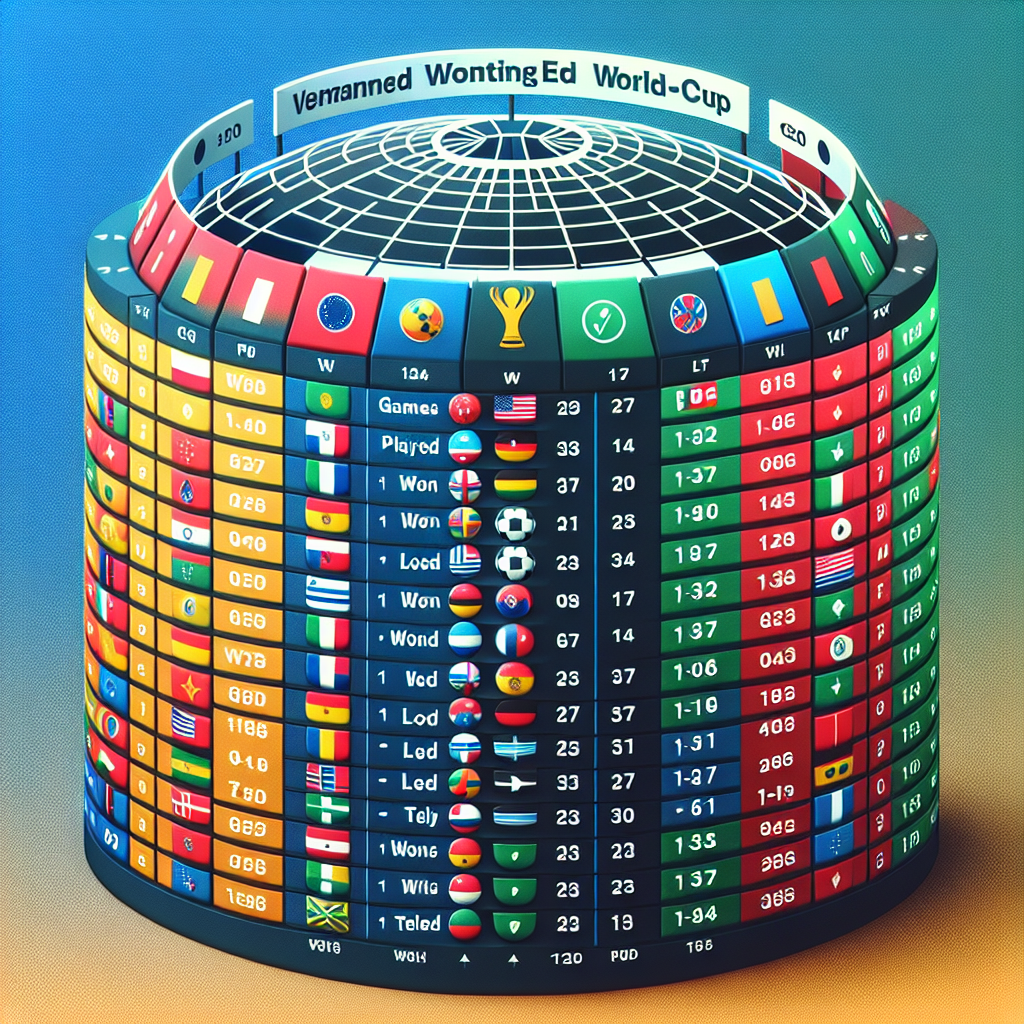
The point table is a crucial component of any World Cup tournament, whether it be in cricket, football, rugby, or any other sport. It serves as a dynamic scoreboard that reflects the performance of teams throughout the competition. This article delves into the intricacies of the point table, its significance, and how it influences the progression of teams in a World Cup. We will explore various examples, case studies, and statistics to provide a comprehensive understanding of this essential element of sports tournaments.
The Role of the Point Table in World Cup Tournaments
The point table is more than just a list of teams and their scores. It is a strategic tool that determines which teams advance to the next stages of the tournament. The point table is typically used in the group stage of World Cup tournaments, where teams are divided into groups and compete against each other to secure a spot in the knockout rounds.
How the Point Table Works
The point table is structured to reward teams based on their performance in matches. Points are awarded for wins, draws, and sometimes even losses, depending on the sport and tournament rules. Here is a general breakdown of how points are typically allocated:
- Win: A team earns a set number of points for winning a match. In many sports, this is usually 3 points.
- Draw: If a match ends in a draw, both teams may receive 1 point each.
- Loss: Generally, no points are awarded for a loss, although some tournaments may offer a consolation point for narrow defeats.
In addition to points, the table often includes other metrics such as goal difference, net run rate, or head-to-head results to break ties between teams with equal points.
Significance of the Point Table
The point table is significant for several reasons. It provides a transparent and objective measure of team performance, ensuring that the best teams advance based on merit. It also adds an element of strategy, as teams must not only aim to win but also consider factors like goal difference or run rate to improve their standing.
Case Study: The 2019 Cricket World Cup
The 2019 Cricket World Cup offers a compelling example of the point table's impact. During the group stage, each team played nine matches, and the top four teams advanced to the semi-finals. The point table was crucial in determining these top four teams, with New Zealand edging out Pakistan for the fourth spot based on net run rate, despite both teams having equal points.
Strategies Influenced by the Point Table
Teams often adjust their strategies based on their position in the point table. For instance, a team that is comfortably leading may choose to rest key players for upcoming matches, while a team on the brink of elimination might adopt a more aggressive approach to secure vital points.
Example: The 2018 FIFA World Cup
In the 2018 FIFA World Cup, Japan advanced to the knockout stage over Senegal due to the "fair play" rule, which was used as a tiebreaker after both teams were level on points, goal difference, and goals scored. This scenario highlighted the importance of discipline and strategic planning in addition to on-field performance.
Challenges and Criticisms of the Point Table System
While the point table is an effective tool for ranking teams, it is not without its challenges and criticisms. One common issue is the potential for teams to play for draws or adopt overly defensive tactics to secure points, which can lead to less exciting matches.
Addressing Tiebreakers
Tiebreakers can also be a contentious issue. Different sports and tournaments use various methods to resolve ties, such as goal difference, head-to-head results, or even drawing lots. These methods can sometimes lead to debates about fairness and the best way to determine the superior team.
Innovations and Future of the Point Table
As sports evolve, so too does the point table system. Innovations such as bonus points for high-scoring games or penalties for disciplinary issues are being explored to make the system more comprehensive and engaging for fans.
Potential Changes in Cricket
In cricket, there have been discussions about introducing bonus points for achieving certain milestones, such as scoring a certain number of runs or taking a specific number of wickets within a set number of overs. These changes aim to encourage more aggressive and entertaining play.
Conclusion: The Point Table as a Pillar of World Cup Tournaments
The point table is an indispensable part of World Cup tournaments, providing a clear and objective framework for ranking teams. It influences strategies, adds excitement, and ensures that the best teams progress based on their performance. While there are challenges and potential areas for improvement, the point table remains a vital component of the sporting world, continually adapting to enhance the experience for players and fans alike.
In summary, understanding the point table is essential for anyone interested in the dynamics of World Cup tournaments. It not only reflects the current standings but also shapes the strategies and outcomes of the competition, making it a fascinating aspect of sports to explore.

